Helvellyn was dubbed "Britain's favourite walk" back in 2018 in a survey jointly undertaken by ITV and the Ordnance Survey. That wouldn't be a surprise to the tens of thousands of fell walkers who each year enjoy the mix of glorious views, routes of all difficulties, and (for a high mountain, at least) relatively easy access.
"If it did not inspire affection, would its devotees return to it so often?" wrote Wainwright to conclude his own introduction to Helvellyn.
I first climbed Helvellyn as a grumpy teenager. I'm not sure why it took me so long to return, especially having climbed several of the nearby fells in the interim, including Sheffield Pike and St Sunday Crag. Nonetheless, armed with a few days off work and a bright autumn day, in October 2019 I found myself back in Glenridding to tackle Helvellyn, with the bonus of collecting my 100th Wainwright (Catstye Cam) along the way.
One of the delights of Helvellyn is the variety of routes to the top, but for this trip I had chosen the classic horseshoe, climbing to the summit via Striding Edge and descending via Swirral Edge.
I wrote the sentence above, and then I stopped writing. I stepped away from my laptop. I had tackled Helvellyn via the classic horseshoe. Are all horseshoe walks classic and are they all tackled? I loaded up Google. Helvellyn via the edges is definitely the classic route. Other classic horseshoes in the Lake District include Fairfield, Kentmere, Newlands, and Coledale. Further afield, there seems to be a general agreement that Snowdon contains a classic horseshoe too, but which routes are for the purists or the most ardent of completists?
Come to think of it, isn’t Britain’s Favourite Walk a bit of a cliché in itself? Will I ever escape these oft-used phrases once I’ve started? You’re not always aware of your own writing quirks – a quick jaunt back through some previous articles revealed a tendency for me to describe Ordnance Survey columns as standing “proud”. I’m also a known over-user of the word vista although that’s a conscious call-back to one of my favourite scenes in the West Wing.
Please do share your favourite hiking clichés in the comments or let me know on social media! Moving on…
There's no solitude on Helvellyn even in the depths of midwinter, and so there's plenty of company on an autumn weekday. Staying south of Glenridding Beck, I set out west aiming for the Mires Beck path to the summit of Birkhouse Moor, from where I'll be able to survey the full scale of the challenge ahead. The path is wide and well-maintained, and the climb is moderate - and if you do need to catch your breath, there's a charming view back to Glenridding and Ullswater to enjoy.
Looking back to Glenridding and Ullswater from Mires Beck, with Glenridding Dodd across the valley.
Approaching the backbone of Birkhouse Moor, the path diverts right as an erosion prevention measure, but as many people choose the old (shorter, but steeper) route as do the revised option. It's worth a further short diversion to the end of the Birkhouse Moor ridge. Despite the large cairn, this isn't the summit - which is a nondescript spot on the wall further along - but it does have a nice view back down to Ullswater and across to Glenridding Dodd.
It also gives you longer to absorb the view of the looming mass of the Helvellyn massif once you return to your intended course. Oh - and what a view it is, with Helvellyn dead ahead, crags plunging downwards to Red Tarn, flanked left and right by Striding and Swirral Edges, and accompanied by the pleasing cone of Catstye Cam, which would be a fine mountain had it the fortune to stand alone.

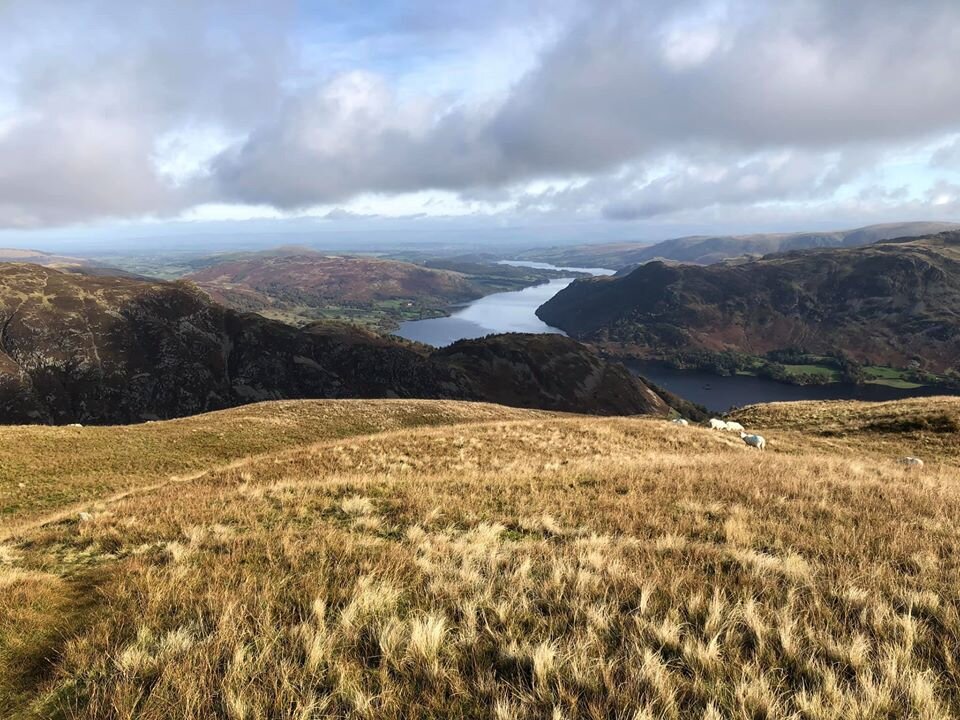

Alright, back onto cliché watch. You’ll have seen Striding Edge described as a knife-edged arête. Are all arêtes knife-edged? One to ponder if you’re attempting Crib Goch, Sharp Edge, or Càrn Mòr Dearg. The winner here is Mount Katahdin in New England though, for taking things a step further and naming their actual ridge route the "knife edge trail".
I don't recall being intimidated by Striding Edge as a 14-year-old, but it is hard to take your eyes off the ridge line once you've reached the start of the traverse at hole-in-the-wall. Do you always traverse a ridge? You never just walk across it!
Despite the difficulties, the Edge still has a tourist feel with families and enthusiasts alike. At the start of the ridge, I passed a young father who has roped up his toddler son to give him an early experience of the rocky scramble; a little ahead were a family of four, with two daughters taking the ridge in their stride and their small dog who looks terrified (but did make it safely across).
Unlike many similar ridges, Striding Edge does have a path that bypasses the ridge line and provides a more comfortable crossing (although there's no get-out for the downward scramble of the "chimney" at the end of the ridge, and let's be clear, it is still a long way down and a brutal place in high winds or with ice and snow). I opted for the fun route and the scramble along the ridge top. In fine weather, this is a challenge, but I never felt over-exposed; in poor weather it would be a different experience entirely.

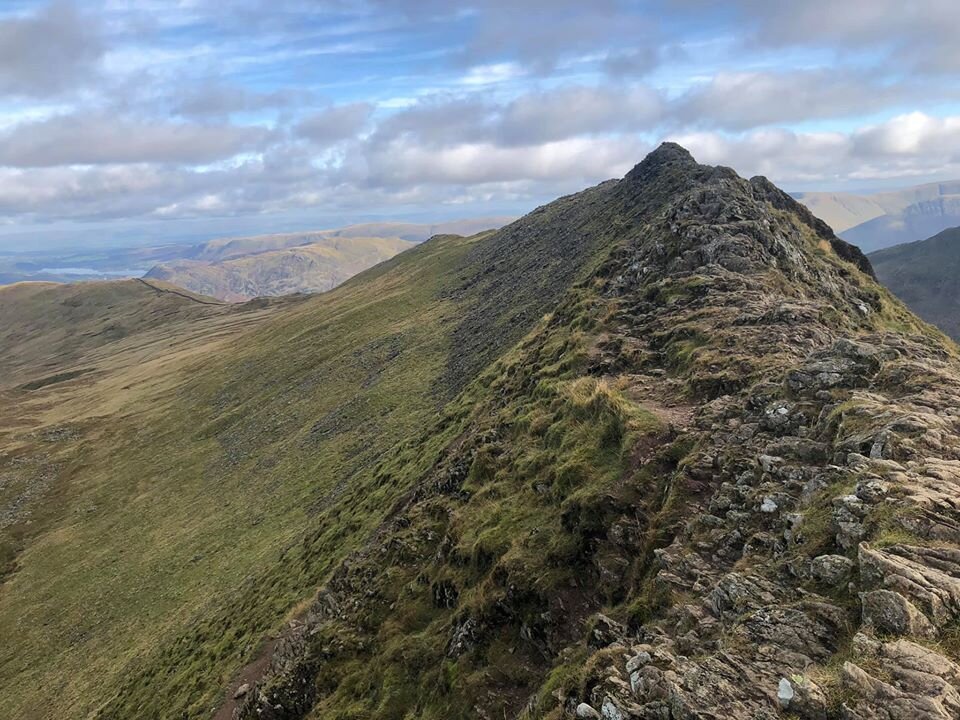


Once you've reached the end of the ridge, there's still a brute of a clamber up onto the summit plateau. Should Helvellyn really have a plateau? Same goes for High Street or Fairfield. The Tibetan Plateau is 620 miles across. I mean I appreciate that the top of Helvellyn is different from a knife-edged arête, but a plateau?
At this point, despite the impression given by my carefully positioned photographs, you won't be alone. Or indeed anything close to alone. That shouldn’t take away from the view though, as you look out over the magnificent vista. Sorry.


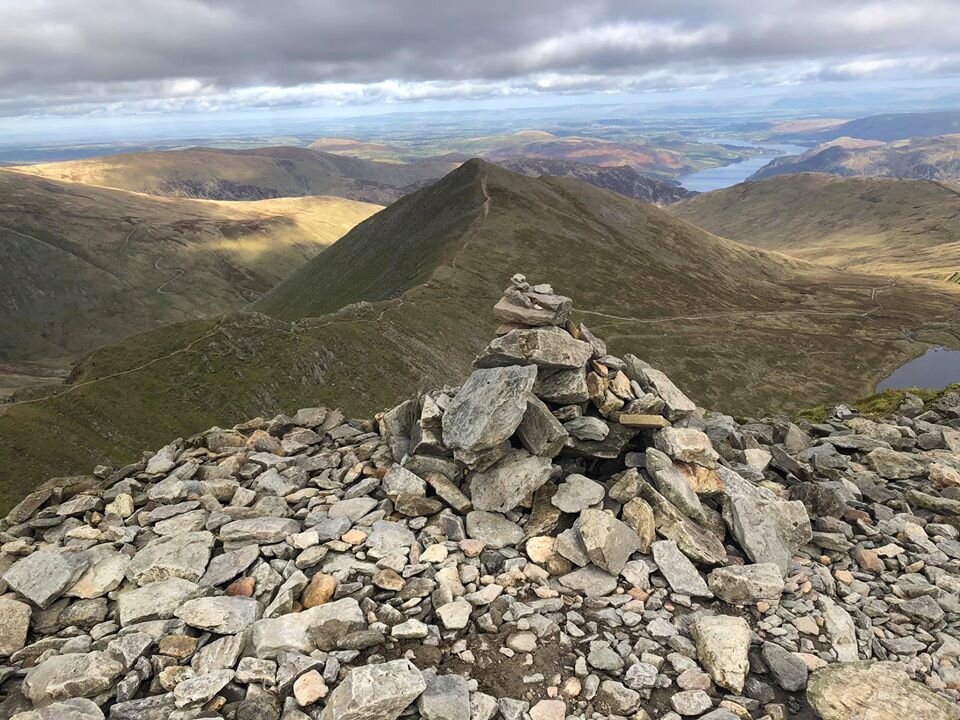
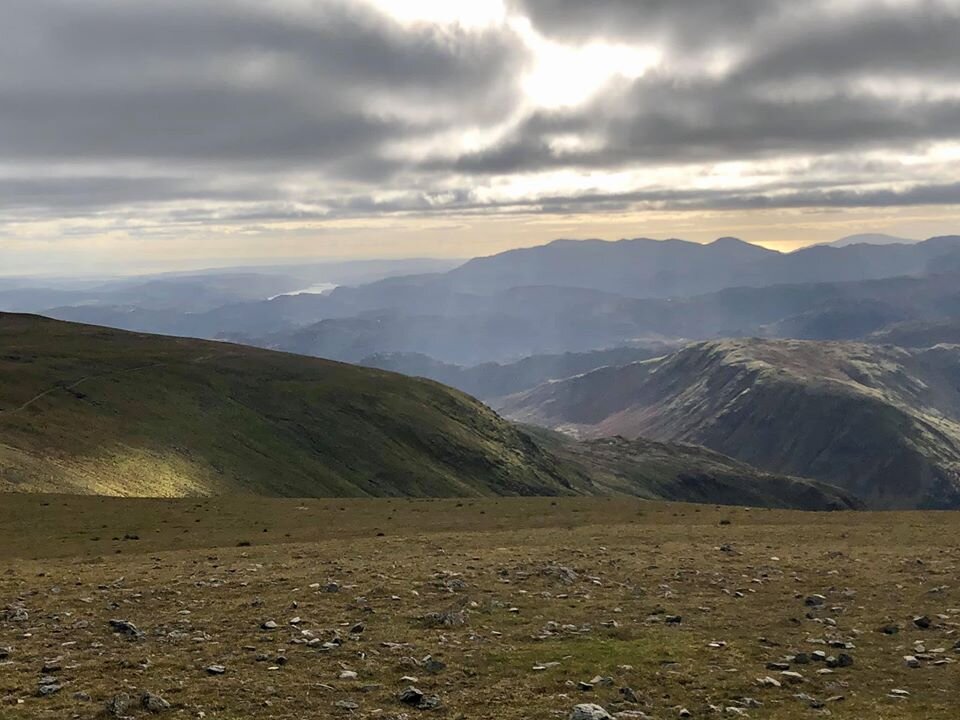
Aside from the tricky but short descent of the Striding Edge chimney (feel free to make your own Santa joke), the most challenging part of the entire walk was the downward scramble onto Swirral Edge. It’s not as technical as the escape from Striding Edge, but like I suspect the majority of fell walkers, I prefer to scramble up rather than down. Swirral Edge itself is shorter and slightly more forgiving than Striding Edge, but nonetheless still demands respect. Me? I managed to navigate the edge with no problems and then sent myself flying on a flat section at the col with Catstye Cam. You can clearly never be too careful!
I’m told 14-year-old Iain vowed never to climb a mountain again after stomping around similar terrain in the mid-nineties. We didn’t head to Catstye Cam back then, which helpfully meant that the day’s final stop was also my 100th Wainwright summit. I broke out a celebratory shortbread – a proud milestone and nearly halfway to 214. Thank you to everyone who has joined me on my adventures so far.

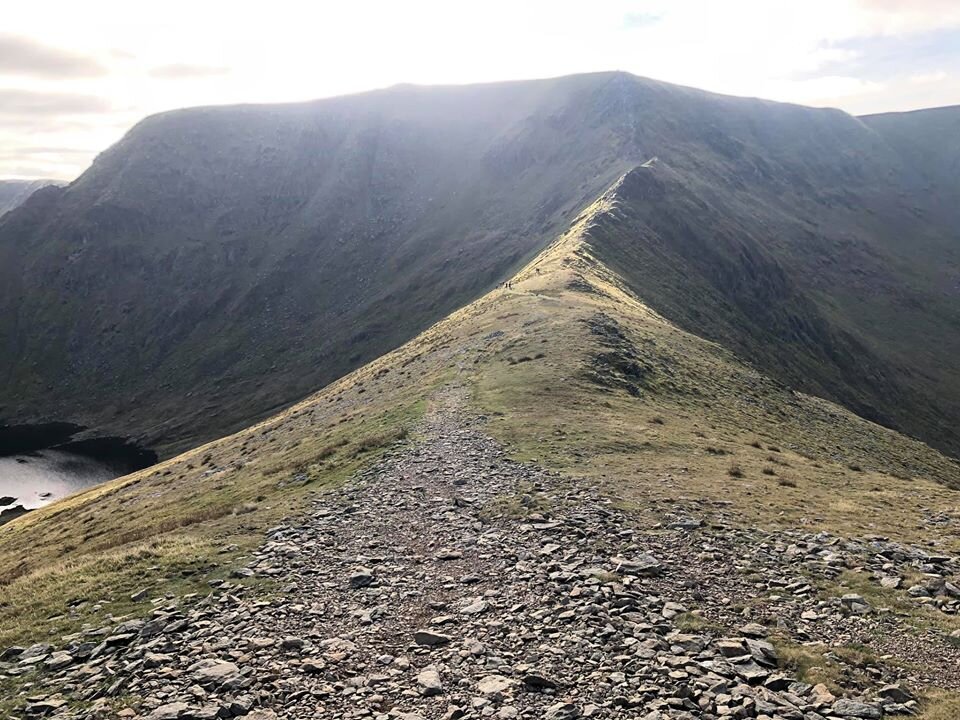


It is possible to descend the steeper east ridge of Catstye Cam, but I opted to retrace my steps back to the col, for a slightly longer but notably gentler descent. From there, a good path meanders alongside Red Tarn Beck to Glenridding Common. Eventually, the path drops you into the midst of the scarred landscape near to the Youth Hostel – a sign that there is only an easy wander left to get back to Glenridding. As on a previous trip to Sheffield Pike, I stuck to the road, but the purists might prefer the path on the south side of the beck.
All in all, a good day out. I’ve never thought to ask what sort of walk would constitute a “bad day out”. Does anyone know?
Date of walk: 21st October 2019
Summits gained: Birkhouse Moor, Helvellyn, Catstye Cam
Total distance: 14.8km
Total ascent: 1074m
GETTING THERE
There are a number of options for parking in Glenridding but they do fill up early on busy days. The 508 bus runs all year round from Penrith to Patterdale, and in spring and summer some services run to Windermere and Kendal via the Kirkstone Pass. The 208 bus runs infrequently between Keswick and Patterdale, but only on spring and summer Saturdays.
With thanks to Adam Hurrey for the inspiration.
